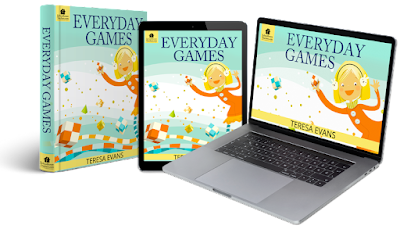I received a COMPLIMENTARY copy of
this one-person puzzle game from Timberdoodle in exchange for my honest opinion. I was not
required to write a positive review, nor was I compensated in any other way.
This post contains affiliate links. For more information, please see my Terms
of Use and Disclosure Policy page. Thank you.
As you know, we love games in our homeschool, especially those that help our children challenge themselves. Having the opportunity to review the one-person puzzle game courtesy of Timberdoodle was a joy in our homeschool. Both our nine-year-old son and our seven-year-old daughter enjoyed working through the different puzzles and modes of play in Pirates Crossfire by Smart Games.
What is Pirates Crossfire?
This one-person puzzle game has four modes and five levels of difficulty. The general idea is to use the puzzle challenge booklet to place some pieces on the board and then use your critical thinking skills to fire out where the rest of the pieces go. Of course, there are restrictions as to where you can put the pirate and navy ships depending on which mode you are playing.
The game is packaged in a sturdy box for storage and comes with:
- A puzzle booklet
- The base for the game
- Two rock pieces
- Two pirate pieces
- Four navy pieces
Once you or your children decide upon which mode and which difficulty you want to play, you pick a challenge. You look in the puzzle booklet to see which pieces you need to add to the base first. You will always put the rock pieces on the board first. After that, you will use the hints (when provided) for placing the navy and pirate ships.
Different Modes (I am sharing our son's descriptions and my notes for the different modes.)
Peace Mode: My son shared that the ships can't hit each other. (The ships are armed with cannons on each side.) After you place the rocks, you need to make sure that the ships' cannons are not pointed at another ship. (They can be pointed at the rocks.)
Pirates Win Mode: "No pirates get hit, all navy get hit." In this mode, you need to make sure that all the ships' cannons are pointed in the right direction. You need to make sure that the pirate ships can shoot at the navy ships.
Navy Ships Win Mode: In this mode, the goal is the opposite of the Pirates' Win mode.
Total War: "All ships must be in (the) line of fire."
There are answer keys for all the challenges, but when just trying the starter level, I think, the Total War is the only mode where you might need to check the answer key for the solution.
Using Pirates Crossfire in Our Homeschool
This one-person puzzle game is perfect when you are homeschooling children of multiple ages. While working with our daughter, I can easily hand this game to our son to keep him amused in an educational way while he waits for his one-on-one homeschool time. He can still work on a variety of cognitive skills like planning, spatial insight, problem-solving, concentration, and flexible thinking while he is playing a fun game.
As a typical boy, he does not just solve the puzzles but creates backstories for the adventures of the pirates and the navy as he works on the challenges. He also created his names for the different levels of the difficulties and the puzzle pieces themselves as he was helping me write this review. For example, the booklet calls the difficulties: starter, junior, expert, master, and wizard but he calls them first-time puzzling, good puzzler, teacher of puzzling, king of puzzling, and golden wizard king of puzzling. (I love how invested he was in using and reviewing Pirate Crossfires.)
After our daughter tried several puzzles in
Horse Academy, she wanted to try her hand at Pirates Crossfire. She was not as successful with these challenges as they do require one to critically think in a totally different way. The pieces must fit together and meet different criteria depending upon which mode you have chosen. So while there is one correct answer, you come to a different way than her previous experience. I think it is great that Smart Games produces so many different puzzle games and that Timberdoodle offers than in their various curriculum packages.
Our Thoughts
I would highly recommend Pirates Crossfire. It is an excellent, high-quality one-person puzzle game. I think the inclusion in the
2022 Sixth-Grade Timberdoodle Curriculum Kit is spot on. While our nine-year-old son was able to complete all the starter puzzles without much help, he was having more difficulty as he tried harder puzzles.
I like that through trial and error our son was able to puzzle out the solutions. It was also very easy for him to get the hang of the challenges. He could easily move through the different modes to show me how the game works. He was really good at explaining the game which to me means that it is well-written and easy to understand.
With multiple modes and 80 challenges,
Pirates Crossfire has longevity and replayability. And as a one-person puzzle game, it will help entertain you and your children during those moments when you or your children have some free time. It would be perfect for your family with your homeschool or not. So get ready to navigate the high seas through critical thinking with Pirates Crossfire.
.png)
.png)
.png)
.png)
.png)
%20(1).png)
.png)
.png)
.png)
%20(1).png)
%20(1).png)
.png)
.png)
.png)
.png)
%20(1).png)


.png)
%20(1).png)
.png)
.png)
.png)

.png)